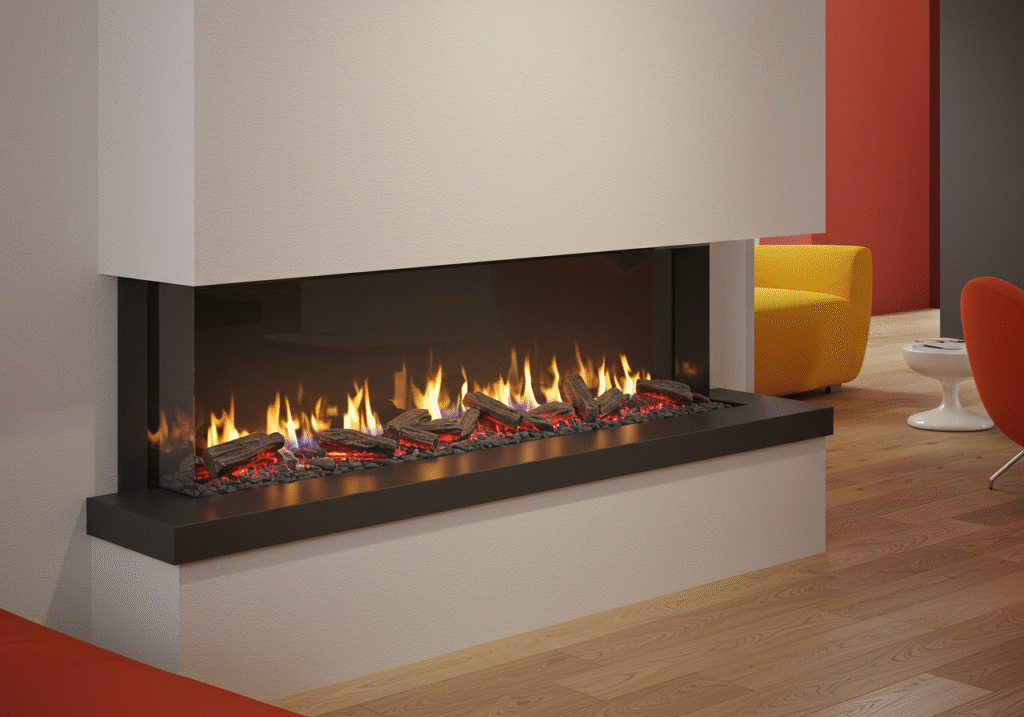Do Electric Fireplaces Use a Lot of Electricity? Debunk the Myth

Owala FreeSip Insulated Stainless Steel Water Bottle with Straw, BPA-Free Sports Water Bottle, Great for Travel, 24 Oz, Denim
$29.99 (as of November 11, 2025 20:10 GMT +00:00 - More infoProduct prices and availability are accurate as of the date/time indicated and are subject to change. Any price and availability information displayed on [relevant Amazon Site(s), as applicable] at the time of purchase will apply to the purchase of this product.)STANLEY Quencher H2.0 Tumbler with Handle and Straw 40 oz | Flowstate 3-Position Lid | Cup Holder Compatible for Travel | Insulated Stainless Steel Cup | BPA-Free | Plum
$26.55 (as of November 11, 2025 20:10 GMT +00:00 - More infoProduct prices and availability are accurate as of the date/time indicated and are subject to change. Any price and availability information displayed on [relevant Amazon Site(s), as applicable] at the time of purchase will apply to the purchase of this product.)Rubbermaid Brilliance Food Storage Containers BPA Free Airtight Lids Ideal for Lunch Meal Prep & Leftovers Set of 5 (3.2 Cup)
$27.99 (as of November 11, 2025 20:10 GMT +00:00 - More infoProduct prices and availability are accurate as of the date/time indicated and are subject to change. Any price and availability information displayed on [relevant Amazon Site(s), as applicable] at the time of purchase will apply to the purchase of this product.)Etekcity Food Kitchen Scale, Digital Grams and Ounces for Weight Loss, Baking, Cooking, Keto and Meal Prep, LCD Display, Medium, 304 Stainless Steel
$13.99 (as of November 11, 2025 20:10 GMT +00:00 - More infoProduct prices and availability are accurate as of the date/time indicated and are subject to change. Any price and availability information displayed on [relevant Amazon Site(s), as applicable] at the time of purchase will apply to the purchase of this product.)Alpha Grillers Meat Thermometer Digital - Instant Read Food Thermometer for Cooking and Grilling Stocking Stuffers for Men Christmas Gifts for Men
$13.58 (as of November 11, 2025 20:10 GMT +00:00 - More infoProduct prices and availability are accurate as of the date/time indicated and are subject to change. Any price and availability information displayed on [relevant Amazon Site(s), as applicable] at the time of purchase will apply to the purchase of this product.)Crock-Pot 7 Quart Oval Manual Slow Cooker, Stainless Steel (SCV700-S-BR), Versatile Cookware for Large Families or Entertaining
$47.99 (as of November 11, 2025 20:10 GMT +00:00 - More infoProduct prices and availability are accurate as of the date/time indicated and are subject to change. Any price and availability information displayed on [relevant Amazon Site(s), as applicable] at the time of purchase will apply to the purchase of this product.)KitchenAid Classic Multifunction Can Opener and Bottle Opener Easy to Use, Razor Sharp Stainless Steel Cutting Wheel, Soft Ergonomic Handles, Black
$14.35 (as of November 11, 2025 20:10 GMT +00:00 - More infoProduct prices and availability are accurate as of the date/time indicated and are subject to change. Any price and availability information displayed on [relevant Amazon Site(s), as applicable] at the time of purchase will apply to the purchase of this product.)Owala SmoothSip Slider Insulated Stainless Steel Coffee Tumbler, Reusable Iced Coffee Cup, Hot Coffee Travel Mug, BPA Free 12 oz, Vanilla Bean
$24.99 (as of November 11, 2025 20:10 GMT +00:00 - More infoProduct prices and availability are accurate as of the date/time indicated and are subject to change. Any price and availability information displayed on [relevant Amazon Site(s), as applicable] at the time of purchase will apply to the purchase of this product.)HydroJug Traveler - 32 oz Water Bottle with Handle & Flip Straw - Fits in Cup Holder, Leak Resistant Tumbler-Reusable Insulated Stainless Steel & Rubber Base - Gifts for Women & Men, Pink Sand
$34.99 (as of November 11, 2025 20:10 GMT +00:00 - More infoProduct prices and availability are accurate as of the date/time indicated and are subject to change. Any price and availability information displayed on [relevant Amazon Site(s), as applicable] at the time of purchase will apply to the purchase of this product.)ThermoPro TP19H Digital Meat Thermometer for Cooking with Ambidextrous Backlit and Motion Sensing Kitchen Cooking Food Thermometer for BBQ Grill Smoker Oil Fry Candy Instant Read Thermometer
$14.99 (as of November 11, 2025 20:10 GMT +00:00 - More infoProduct prices and availability are accurate as of the date/time indicated and are subject to change. Any price and availability information displayed on [relevant Amazon Site(s), as applicable] at the time of purchase will apply to the purchase of this product.)Introduction: Unpacking the Real Cost of Cozy Ambiance
The allure of a fireplace is timeless. It conjures images of warmth, comfort, and a cozy gathering place for family and friends. However, the traditional wood-burning fireplace comes with significant drawbacks: the mess of logs and ash, the need for a chimney, and the inefficiency of losing most of the heat up the flue. Electric fireplaces have surged in popularity as a clean, convenient, and stylish alternative. But this modern convenience leads many homeowners to ask a critical question: Do electric fireplaces use a lot of electricity?
The straightforward answer is that while electric fireplaces do consume electricity, they are often more cost-effective than you might think. Their actual impact on your energy bill is not a single figure but a variable that depends on your usage habits, the specific model you own, and your local electricity rates. More importantly, due to their high efficiency and the ability to provide “zone heating,” they can actually help you save money on your overall heating bills when used strategically .
This comprehensive guide will demystify the electricity consumption of electric fireplaces. We will break down the numbers, explore the factors that affect operating costs, and provide practical tips to maximize efficiency. By the end of this article, you will have all the knowledge needed to enjoy the ambiance of a fireplace while making an informed, budget-conscious decision for your home.
Section 1: Understanding Electric Fireplace Energy Consumption
To truly understand the cost, we must start with the basics of how these appliances use power. Unlike gas or wood fireplaces that burn fuel, electric models convert electrical energy directly into heat and light.
The Core Metric: Watts and Kilowatt-Hours
The power consumption of any electrical appliance is measured in watts (W). Most standard electric fireplaces are designed to operate at a maximum of 1,500 watts (or 1.5 kilowatts) when the heater is on its high setting . Some smaller or more efficient models may use 1,000 watts, while larger units can draw up to 2,000 watts .
Your electricity bill, however, is based on kilowatt-hours (kWh). This is the amount of energy used by a 1,000-watt appliance running for one hour. The cost to run your fireplace is determined by this simple formula :
(Fireplace Wattage ÷ 1000) x Hours Used x Your Electricity Rate (per kWh) = Total Cost
The Magic of 100% Efficiency
One of the most significant advantages of electric fireplaces is their 100% energy efficiency . This means that virtually all the electricity drawn by the unit is converted directly into heat for your room. In contrast, a significant amount of heat from wood-burning and gas fireplaces is lost through the chimney or venting system. For gas fireplaces, which may be 70-90% efficient, 10-30% of the energy you pay for literally goes out the window . With an electric fireplace, the heat stays in your living space.
Flame-Only Mode: Ambiance on a Budget
A unique feature that sets electric fireplaces apart is the ability to operate the flame effect independently of the heat. When you want the cozy visual of flickering flames without warming the room, you can use the “flames only” mode. This setting typically consumes a mere 100 to 300 watts of power—comparable to a few standard light bulbs . This allows you to enjoy the fireplace’s ambiance year-round for just pennies per hour.
Section 2: Calculating the Cost – Real-World Examples

Let’s translate the technical specifications into real-world costs. Using the average U.S. electricity rate of approximately $0.15 to $0.17 per kWh , we can calculate hourly, daily, and monthly expenses for a standard 1,500-watt fireplace.
Hourly Operating Costs
The cost to run the heater on its highest setting typically ranges from $0.15 to $0.26 per hour . Using the flame-only mode is dramatically cheaper, costing only about $0.02 to $0.05 per hour .
Table: Electric Fireplace Cost Breakdown
| Operating Mode | Typical Wattage | Hourly Cost (at $0.16/kWh) | Best For |
|---|---|---|---|
| Flame Only | 100 – 300 W | $0.016 – $0.048 | Year-round ambiance, summer evenings, decorative purposes. |
| Low Heat Setting | 750 W | ~$0.12 | Taking a slight chill off the room, maintaining warmth. |
| High Heat Setting | 1,500 W | ~$0.24 | Quickly warming a cold room, heating on very cold days. |
| With Thermostat (Cycling) | Varies | ~$0.13 (average) | Maintaining a set room temperature efficiently. |
Monthly Cost Estimates
Your monthly expense will vary greatly depending on how frequently you use the heat. Here are some realistic scenarios based on a 1,500-watt unit :
- Moderate Use (2 hours of heat per day): If you use the high heat setting for 2 hours each evening, your monthly cost would be approximately $15.
- Frequent Use (4 hours of heat per day): For 4 hours of daily use, the cost rises to about $30-$36 per month .
- Ambiance Focused (4 hours of flame-only mode per day): If you primarily enjoy the flames without heat, the monthly cost is minimal, around $4 .
It’s important to note that these are estimates. Your actual cost will depend on your local electricity rates, which can vary significantly from state to state.
Section 3: Factors That Influence Your Fireplace’s Electricity Usage
Several key factors determine how much electricity your fireplace will actually consume. Understanding these puts you in control of your energy bill.
1. Wattage and Heat Settings
The most direct factor is the wattage of your unit and the setting you choose. As shown in the table above, using the low heat (750W) setting instead of the high heat (1500W) setting can instantly cut your energy consumption in half .
2. Usage Time and Frequency
This is simple arithmetic: the more hours you run the heater, the higher your consumption. Using a timer to automatically shut off the fireplace after you leave the room or go to bed is an excellent way to prevent wasted energy .
3. Thermostat Control
Many modern electric fireplaces come with a built-in thermostat. Instead of running continuously, the thermostat allows the fireplace to cycle on and off to maintain your desired room temperature. This prevents overheating and wasteful energy use. When the thermostat is engaged, the fireplace may only run 50% of the time, cutting your average hourly cost significantly .
4. Room Size and Insulation
An electric fireplace is most effective in a well-insulated room of an appropriate size. Most standard 1,500-watt models are designed to heat spaces up to 400-500 square feet . If the room is drafty or much larger than the unit’s capacity, the fireplace will have to work harder and longer to maintain warmth, using more electricity. Sealing drafts and ensuring proper insulation helps contain the heat, improving efficiency .
Section 4: Electric vs. Other Fireplace Types – A Cost and Efficiency Comparison

To fully answer “Do electric fireplaces use a lot of electricity?”, it’s helpful to compare them to alternative options.
Electric vs. Gas Fireplaces
While electric fireplaces have a 100% efficiency rating, gas fireplaces typically range from 70-90% efficient, losing heat through their venting systems . In terms of operating cost, electric fireplaces generally have a clear advantage. Running a natural gas fireplace can cost around $0.17 to $0.28 per hour, and propane models can be even more expensive, up to $1.10 per hour . This makes electric fireplaces a more cost-effective choice for supplemental heating.
Electric vs. Wood-Burning Fireplaces
Wood-burning fireplaces are the least efficient option. Studies show they can lose up to 70% of their heat up the chimney, meaning most of the energy from the burning wood is wasted . They also require ongoing expenses for firewood and annual chimney cleaning for safety. Electric fireplaces provide a much more efficient and contained heat source.
Section 5: Practical Tips to Reduce Your Electric Fireplace’s Energy Consumption
You can enjoy the comfort of your fireplace while minimizing its impact on your electricity bill. Here are seven effective strategies:
1. Leverage Zone Heating
This is the most powerful money-saving tactic. Instead of turning up your central heating thermostat to warm your entire house, lower the central thermostat and use your electric fireplace to heat only the room you are occupying . The savings on your central heating bill can more than offset the cost of running the fireplace.
2. Utilize the Thermostat and Timer
If your model has these features, use them. Set the thermostat to a comfortable temperature (e.g., 68-70°F) and let the fireplace cycle automatically. Use the timer to turn the heater off after you fall asleep or leave the house .
3. Embrace the Low-Heat Setting
Once your room is comfortably warm, switch from the high-heat setting to the low-heat setting. This reduces energy consumption by 50% while maintaining a cozy atmosphere .
4. Enjoy Flame-Only Mode
Remember that the flame effect can be used without heat. This is perfect for creating ambiance during warmer months or during dinners and parties where additional heat is not needed .
5. Improve Room Insulation
Simple steps like applying weather stripping to doors, using draft stoppers, and ensuring windows are sealed will keep the generated heat inside the room longer. This means your fireplace will run less frequently to maintain the temperature .
6. Perform Regular Maintenance
Keep the air intake and output vents on your fireplace clean and free from dust and obstructions. This ensures optimal airflow, allowing the unit to heat the room efficiently and cycle off sooner .
7. Choose an Energy-Efficient Model
When purchasing a new fireplace, look for features like LED lighting for the flame effects (which use less power than older bulb types), programmable thermostats, and energy-saving modes . Brands like Dimplex and SimpliFire are known for incorporating advanced, efficient technologies .
Conclusion: An Efficient Path to Warmth and Ambiance
So, do electric fireplaces use a lot of electricity? The evidence shows that they are a remarkably efficient and cost-conscious heating solution. While they do draw a significant amount of power when the heater is active, their 100% efficiency, combined with the strategic use of zone heating, can lead to net savings on your energy bills. Their flexibility—allowing you to enjoy beautiful flames with or without heat—makes them a versatile addition to any home.
The key to managing electricity usage lies in your habits: using the thermostat and timer, opting for lower heat settings when possible, and leveraging the fireplace for targeted warmth. By making informed choices, you can confidently enjoy the cozy, inviting atmosphere an electric fireplace provides, knowing you are using energy intelligently and economically.























